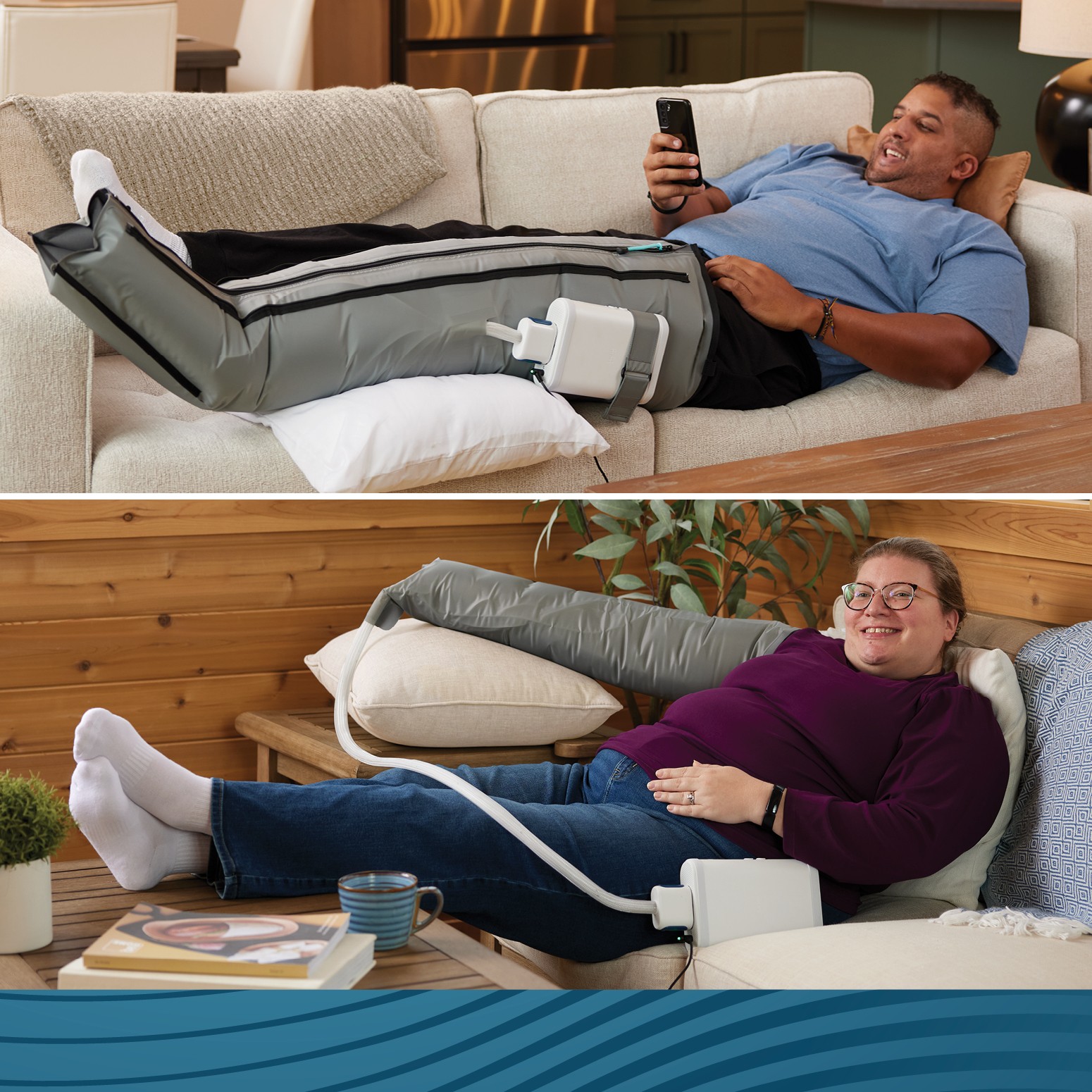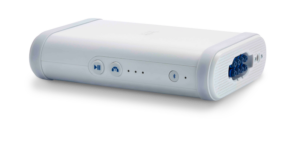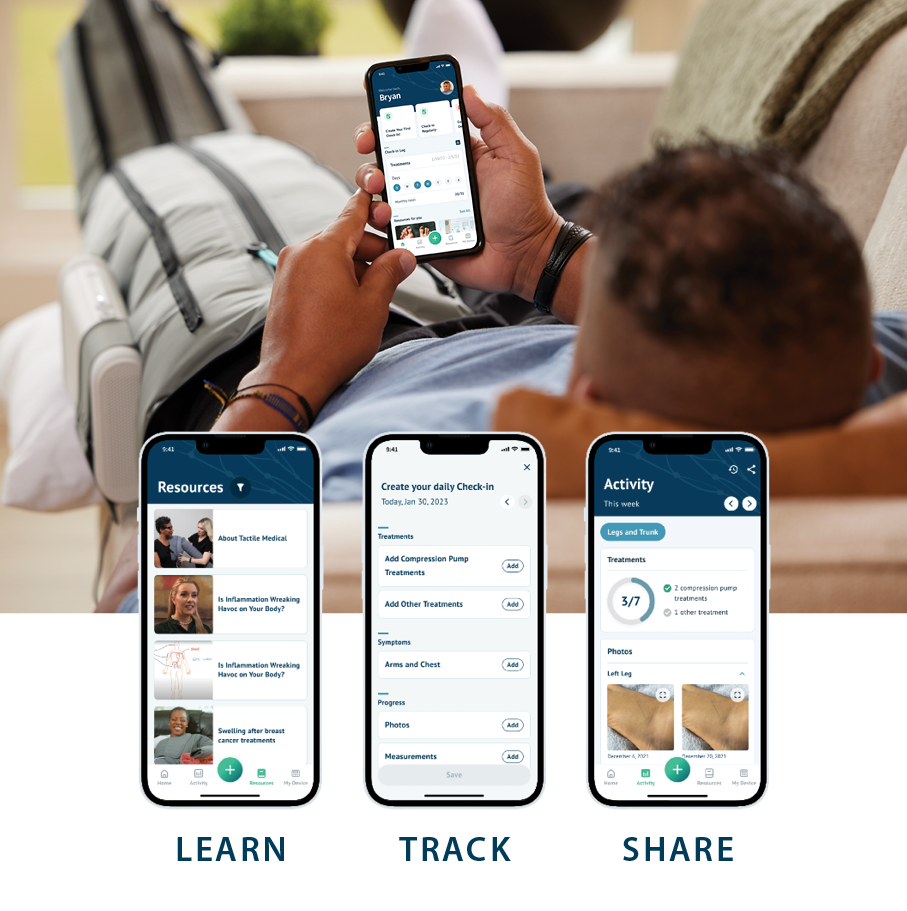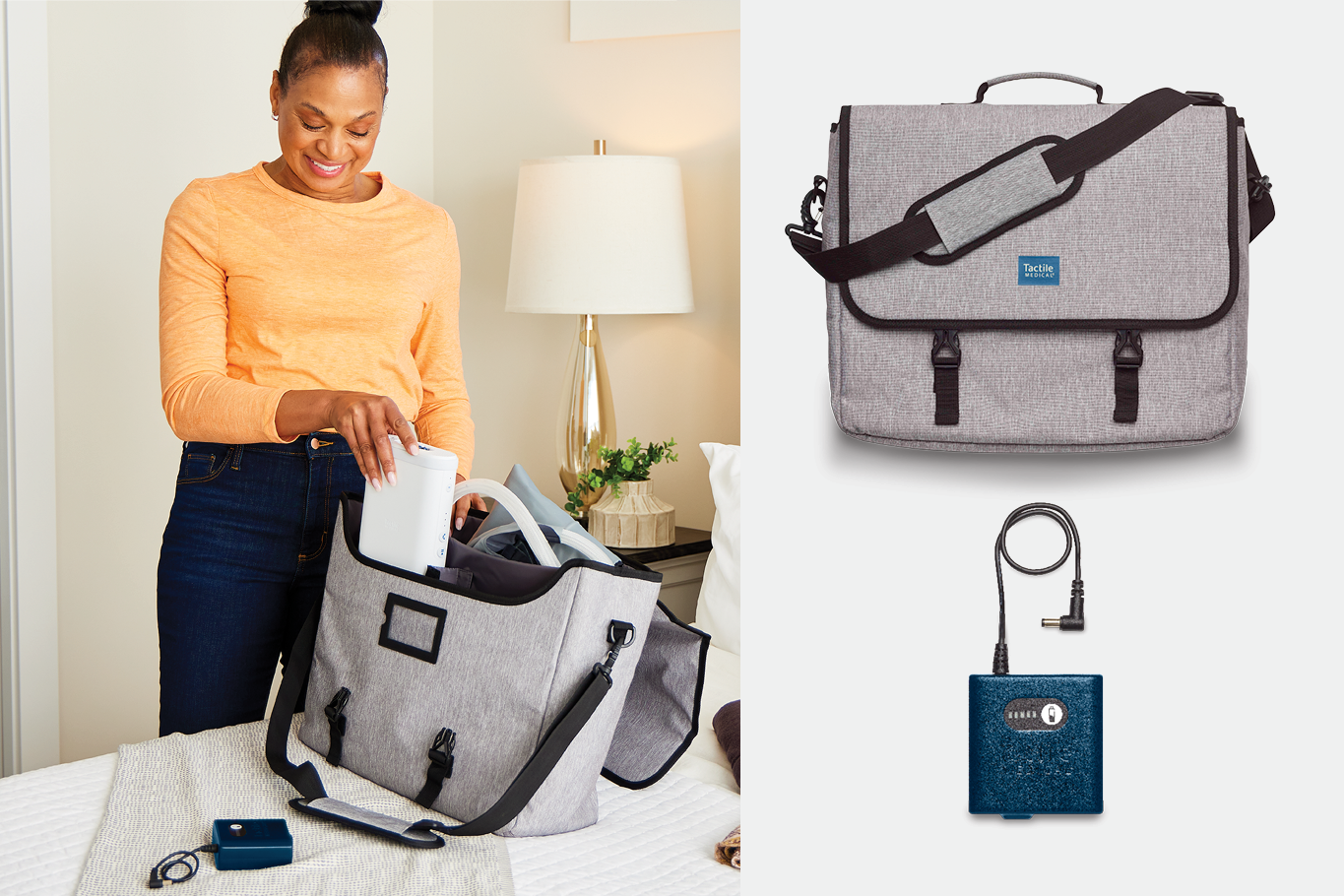Small. Light. Compact. Connected.
Now that’s Nimbl.
Nimbl™ truly lives up to its name with its sleek look, small footprint, and an eight-compression-chamber design. Its multiple pressure modes allow you to individualize treatment, and the unique inflation sequencing ensures a more comfortable experience for your patients.
Nimbl delivers effective pneumatic compression therapy, with a small, light, and compact controller designed for improved patient experience.


The compact, user-friendly innovation you and your patients have been waiting for.
User-friendly
Compact design weighing less than 2 pounds with a simple, two-button interface for easy operation.
Easy to tuck away
Controller is the size of a hardcover book, making it easy to store after treatment or pack in an overnight bag.
Optimized for adherence
Smallest pneumatic compression device on the market, featuring rechargeable battery,* increases likelihood of treatment adherence.
More nimble, yet same clinical efficacy**.
In a clinical study, patients treating their lymphedema with a pneumatic compression device like Nimbl experienced multiple benefits:

Reduction in the rate of episodes of cellulitis.

Reduction in the rate of clinic visits.

Reduction in the rate of hospitalizations.
Have patients who need a basic PCD?
Kylee allows your patients to share their progress during visits.
Kylee™ is a free mobile app designed to help you focus on positive patient outcomes.
With Kylee, your patients can learn about lymphedema, track key metrics and share photos, measurements, and more, allowing you to make informed treatment decisions.
Learn more

At home or on the road, your patients can take Nimbl wherever they go.
View accessories that make it even easier for your patients to take their care anywhere*.

Nimbl™ Pneumatic Compression Devices for Clinicians FAQs
Does Medicare cover pneumatic compression devices?
Yes, Medicare typically covers pneumatic compression devices for lymphedema, chronic venous insufficiency with open leg ulcers, and other similar conditions that affect the lymphatic system. However, patients will need to be prescribed a pneumatic compression device by their doctor in order to qualify, including Nimbl. Our team of reimbursement specialists works closely with clinicians, patients, and health plans, including Medicare, Veterans Affairs, and private health plans, to advocate for patients who require lymphedema treatment with a pneumatic compression device.
How do pneumatic compression devices support clinical outcomes?
Pneumatic compression devices, such as Nimbl, promote lymphatic circulation by mimicking the body’s natural muscle pump to encourage the flow of lymphatic fluid and remove stagnant interstitial fluid that has built up in the body’s tissues. In a clinical setting, pneumatic compression devices offer several outcome-based advantages, such as:
- Reduced swelling: Sequential compression promotes the flow of fluid out of the affected limb or area, decreasing limb volume and improving patient comfort and mobility.
- Improved tissue health: PCDs help encourage wound healing and tissue repair, which helps decrease the risk of infection and recurrent wounds, such as venous ulcers.
- Pain management: By promoting lymphatic circulation, patients using PCDs can experience less swelling that causes pain and discomfort in the affected region and enjoy a better quality of life.
- Fewer in-clinic visits: Pneumatic compression devices, such as Nimbl, improve clinical outcomes and reduce healthcare costs.
By incorporating pneumatic compression pumps into treatment plans, clinicians can complement manual therapies, reduce chronic swelling, and provide patients with a reliable at-home tool to manage symptoms of lymphedema or chronic venous insufficiency.
What conditions can pneumatic compression devices help treat?
Nimbl pneumatic compression pumps can help clinicians treat a range of lymphatic disorders that impact the body, including:
- Venous insufficiency: Chronic venous insufficiency (CVI) is the leading cause of lymphedema in the United States, and occurs when an individual’s valves in the veins fail to function properly. This valve malfunction causes fluid to pool in the affected region, typically the legs, resulting in swelling and skin changes. Nimbl pneumatic compression devices improve venous return, reducing symptoms and improving quality of life.
- Chronic edema: Patients experiencing chronic swelling can benefit from Nimbl, as it gently directs fluid away from the affected area to relieve swelling and prevent fluid buildup.
- Lymphedema: Lymphedema is a chronic, progressive condition that can be either inherited or present at birth, known as primary lymphedema, or caused by a disruption to the lymphatic system due to factors such as cancer, surgery, injury, blood clots, venous insufficiency, or obesity, known as secondary lymphedema. Lymphedema causes fluid to build up in the body’s tissues, leading to swelling, pain, and other unique skin changes. Pneumatic compression devices are designed to mimic manual lymphatic drainage by applying sequential air pressure, which encourages lymphatic drainage.
- Wound healing: Persistent swelling from lymphedema, CVI, and similar conditions can impede lymphatic circulation, causing chronic wounds, such as venous ulcers. These open wounds can increase a patient’s risk of infection, including cellulitis. Nimbl pneumatic compression devices help encourage lymphatic flow, creating a healthier environment for wound healing and decreasing risk of infection.
Are there specific pneumatic compression devices for different parts of the body?
Yes, Nimbl pneumatic compression devices support arm and leg garments, depending on the affected limb(s). Nimbl is comprised of a lightweight controller with a simple, two-button interface that allows you to attach garments for arm or leg treatment. The arm garment is available in two lengths, short and long garments, depending on the patient’s measurements. Leg garments are also available in multiple lengths as well as extenders to expand width, depending on patient measurements. The multi-chamber garments help patients receive tailored therapy depending on their anatomy and diagnosis.
How do pneumatic compression devices compare to manual lymphatic drainage?
Both manual lymphatic drainage (MLD) and pneumatic compression devices are typically part of a patient’s complete decongestive therapy plan. PCDs can complement MLD by providing consistent active compression therapy at home or in clinic. Pneumatic compression devices, such as Nimbl, are clinically proven to be more effective than self-manual lymphatic drainage, helping clinicians and patients extend treatment benefits between sessions.
*These optional accessories are available for purchase and not covered by insurance. They are not necessary to receive effective therapy.
**Brayton KM, Hirsch AT, O’Brien PJ, Cheville A, Karaca-Mandic P, Rockson SG. Lymphedema Prevalence and Treatment Benefits in Cancer: Impact of a Therapeutic Intervention on Health Outcomes and Costs. Public Library of Science PLOS ONE. www.plosone.org. December 2014. Accessed December 2014.